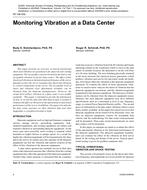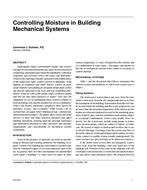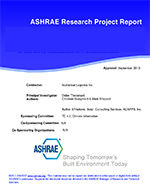The Army is required by law (EPACT 2005, EISA 2007) to eliminate fossil fuel use in new and renovated facilities by 2030 and to reduce overall facility energy usage by 30% by 2015. Army policy is to achieve eight net zero energy pilot installations by 2020, 25 net zero energy installations by 2031, and for all installations to achieve net zero energy status by 2058.
Achieving Net Zero Energy (NZE) will only be possible if an optimum mix of demand reduction and renewable sources are put in place at a community (installation) or building cluster scale. The Army operates what are essentially small campuses, or clusters of buildings on its installations. The US Department of Energy (DOE) is focused on the national grid scale or on individual buildings, while the commercial focus is on retrofits to individual buildings. There are only few case studies worldwide that address dynamics of energy systems at the community scale, and to date, there is a lack of tools to perform that task. The building stock at most US Army installations is complex and includes a mix of high and low energy use buildings. Energy use in these buildings varies due to the different military mission and requirements for each building, installation growth and expansion, and soldier deployment. Achieving net zero energy economically at such installations will require a seamless blend of energy conservation in individual buildings and building systems automation, utility management and control, and power delivery systems that have the capability to offer integration of on-site power generation (including renewable energy sources).
This paper describes the Net Zero fossil fuel based energy optimization process and illustrates it with an example based on the results of study conducted for a cluster of buildings at Fort Irwin, CA. The integrated optimization process is being developed under the Army research and development project “Modeling Net Zero Installations – Energy (NZI-E)” and the International Energy Agency (IEA) Energy Conservation in Buildings and Community Systems (ECBCS) Annex 51. The process is stepped, beginning with the optimization of each building to achieve the most cost effective energy efficient optimization of building envelope and energy using systems. Then energy saving measures affecting the total building cluster are optimized taking advantages of the diversification between energy intensities, scheduling, and waste energy streams utilization. The energy demands of the resulting energy-use optimized cluster will require the minimum sized renewable energy system needed to make the building cluster Net Zero fossil fuel energy.
Product Details
- Published:
- 2012
- Number of Pages:
- 16
- File Size:
- 1 file , 950 KB
- Product Code(s):
- D-CH-12-007
- Note:
- This product is unavailable in Russia, Belarus


